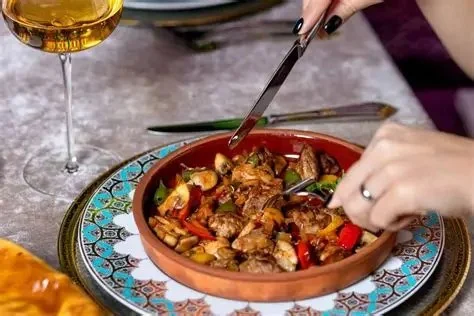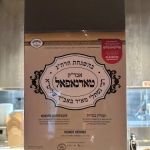
- 1. Discovering Middle Eastern Restaurants with Unique Tasting Menus
- 2. Why Choose Middle Eastern Tasting Menus?
- 3. Top Middle Eastern Restaurants Offering Tasting Menus
- 4. What to Expect from a Middle Eastern Tasting Menu
- 5. Pairing Wines and Drinks with Middle Eastern Tasting Menus
- 6. Tips for Enjoying Your Middle Eastern Tasting Menu
1. Discovering Middle Eastern Restaurants with Unique Tasting Menus
Middle Eastern cuisine offers a delightful mix of flavors, textures, and aromas, making it one of the most exciting culinary experiences in the world. From rich, spiced stews to fresh salads and flavorful grilled meats, Middle Eastern food is a celebration of both simplicity and complexity. If you're looking to explore this vibrant cuisine in a more intimate and immersive way, then a tasting menu is a perfect option.
In this guide, we'll explore some of the top Middle Eastern restaurants offering unique tasting menus. These curated dining experiences allow you to sample a variety of dishes, often presented in a way that showcases the depth and diversity of Middle Eastern cuisine. Whether you’re a seasoned fan of falafel and hummus or you’re new to the world of Middle Eastern flavors, a tasting menu offers a fantastic way to discover the region’s best dishes.
2. Why Choose Middle Eastern Tasting Menus?
A tasting menu offers a more structured, guided way to enjoy a variety of dishes that highlight the complexity of Middle Eastern cooking. Here are a few reasons why choosing a tasting menu at a Middle Eastern restaurant can be a rewarding experience:
- Exploration of Flavors: Middle Eastern cuisine is known for its use of aromatic spices like cumin, coriander, cinnamon, and saffron. A tasting menu allows you to experience a wide range of these bold flavors in one meal, offering a complete sensory experience.
- Variety of Dishes: Middle Eastern tasting menus often include a variety of appetizers (mezze), main courses, and desserts, giving you a well-rounded experience. You can enjoy everything from grilled kebabs and savory dips to sweet pastries.
- Educational Experience: A tasting menu allows you to learn about the diverse cultures and regions that make up Middle Eastern cuisine. It’s an excellent opportunity to understand the history and significance behind certain dishes.
- Exclusive Dishes: Many restaurants offer special, off-menu items as part of their tasting menus, providing you with the opportunity to try unique dishes that aren’t typically available for order à la carte.
3. Top Middle Eastern Restaurants Offering Tasting Menus
If you’re looking for a Middle Eastern restaurant that offers an exceptional tasting menu, here are some top establishments that stand out for their innovative takes on traditional cuisine:
- Zahav (Philadelphia, PA): Zahav is renowned for its modern Israeli cuisine and offers a tasting menu that showcases the best of Middle Eastern flavors. Guests can enjoy dishes like lamb shoulder, hummus with pine nuts, and a variety of mezze.
- Ilili (New York, NY): This Lebanese restaurant offers a beautifully curated tasting menu featuring traditional dishes with a modern twist. Signature dishes include roasted lamb, grilled vegetables, and a range of delicate mezze.
- Shaya (New Orleans, LA): Shaya is known for its innovative approach to Israeli cuisine. The restaurant offers a tasting menu that includes hummus, labneh, stuffed grape leaves, and other flavorful dishes, all expertly paired with wines from the region.
- Aladdin’s Eatery (Multiple Locations): Aladdin’s offers a more casual dining experience with an extensive mezze tasting menu. From baba ganoush to falafel and shawarma, their tasting menu allows you to sample a wide variety of dishes in a relaxed setting.
4. What to Expect from a Middle Eastern Tasting Menu
A typical Middle Eastern tasting menu will take you on a journey through a variety of textures and flavors. Here’s what you can expect during your meal:
- Mezze: A tasting menu often begins with a selection of mezze, or small appetizers. These could include hummus, baba ganoush, falafel, tabbouleh, and grilled vegetables. Each bite is packed with flavor, offering a perfect introduction to the meal.
- Grilled Meats: The main courses often feature expertly grilled meats, such as lamb, chicken, or beef, seasoned with spices like sumac, cumin, and paprika. These meats are often served with rice or flatbread.
- Fresh Herbs and Spices: Expect a variety of herbs and spices to appear in your dishes, such as mint, parsley, garlic, and saffron. These ingredients are key to creating the complex, aromatic flavors of Middle Eastern cuisine.
- Sweet Endings: Many Middle Eastern tasting menus end with a sweet note, such as baklava, kunafa, or Turkish delight. These desserts are often rich in flavor and can include ingredients like honey, pistachios, and rosewater.
5. Pairing Wines and Drinks with Middle Eastern Tasting Menus
Pairing the right drink with your Middle Eastern tasting menu can elevate the entire dining experience. While traditional Middle Eastern cuisine pairs well with herbal teas, wine can also complement the bold flavors of the dishes. Here are a few pairing suggestions:
- White Wines: Light, crisp white wines, such as Sauvignon Blanc or Chardonnay, pair well with mezze and grilled fish dishes. The acidity of these wines helps balance the richness of the food.
- Red Wines: For meatier dishes like lamb or beef, try pairing with a medium-bodied red wine like Merlot or Shiraz. These wines’ fruity and peppery notes complement the spices in grilled meats.
- Arak: A traditional Middle Eastern drink, arak is an anise-flavored spirit often served with meals. It’s an excellent choice for pairing with grilled meats and strong-flavored appetizers.
- Mint Tea: In place of alcohol, mint tea is a refreshing and traditional drink that can help cleanse the palate between courses, especially when paired with dessert.
6. Tips for Enjoying Your Middle Eastern Tasting Menu
To make the most of your Middle Eastern tasting menu, here are a few tips:
- Ask for Wine Pairings: If the restaurant offers wine pairings with the tasting menu, take advantage of this service to enhance your experience and learn more about how the wines complement the food.
- Take Your Time: A tasting menu is meant to be savored, so take your time between courses. Chat with your dining companions, enjoy the flavors, and savor each dish.
- Be Open to New Flavors: Middle Eastern cuisine can be bold and full of unfamiliar ingredients. Be open-minded and embrace the new flavors and textures that come your way.
- Ask Questions: Don’t hesitate to ask your server about the history of the dishes or ingredients. Many Middle Eastern dishes have fascinating stories behind them, and learning about them can deepen your appreciation.
Middle Eastern restaurants with tasting menus offer a rich, flavorful experience that goes beyond the traditional dining routine. With a variety of dishes and new flavors to discover, it’s the perfect opportunity to explore this vibrant cuisine. For more information on finding the best Middle Eastern restaurants and tasting menus near you, visit Dine Droop for expert recommendations.








 IHOP3.0 (470 reviews)
IHOP3.0 (470 reviews) Al Chile4.0 (87 reviews)
Al Chile4.0 (87 reviews) Vive La Crepe4.0 (28 reviews)
Vive La Crepe4.0 (28 reviews) International Cafe & BBQ4.0 (276 reviews)
International Cafe & BBQ4.0 (276 reviews) Supreme pizza NY3.0 (23 reviews)
Supreme pizza NY3.0 (23 reviews) Munch Heimish4.0 (241 reviews)
Munch Heimish4.0 (241 reviews) Best Sushi Restaurants for Every Budget and Taste: A Complete Guide
Best Sushi Restaurants for Every Budget and Taste: A Complete Guide The Appeal of French Restaurants for Special Occasions
The Appeal of French Restaurants for Special Occasions Exploring Vegan Restaurants That Focus on International Flavors
Exploring Vegan Restaurants That Focus on International Flavors How Pizza Restaurants Are Attracting Customers With Limited Edition Offerings
How Pizza Restaurants Are Attracting Customers With Limited Edition Offerings How Wine Bars Are Organizing Pairing Nights for Enthusiasts
How Wine Bars Are Organizing Pairing Nights for Enthusiasts How Juice Shops Are Integrating Superfoods Into Daily Menus
How Juice Shops Are Integrating Superfoods Into Daily Menus